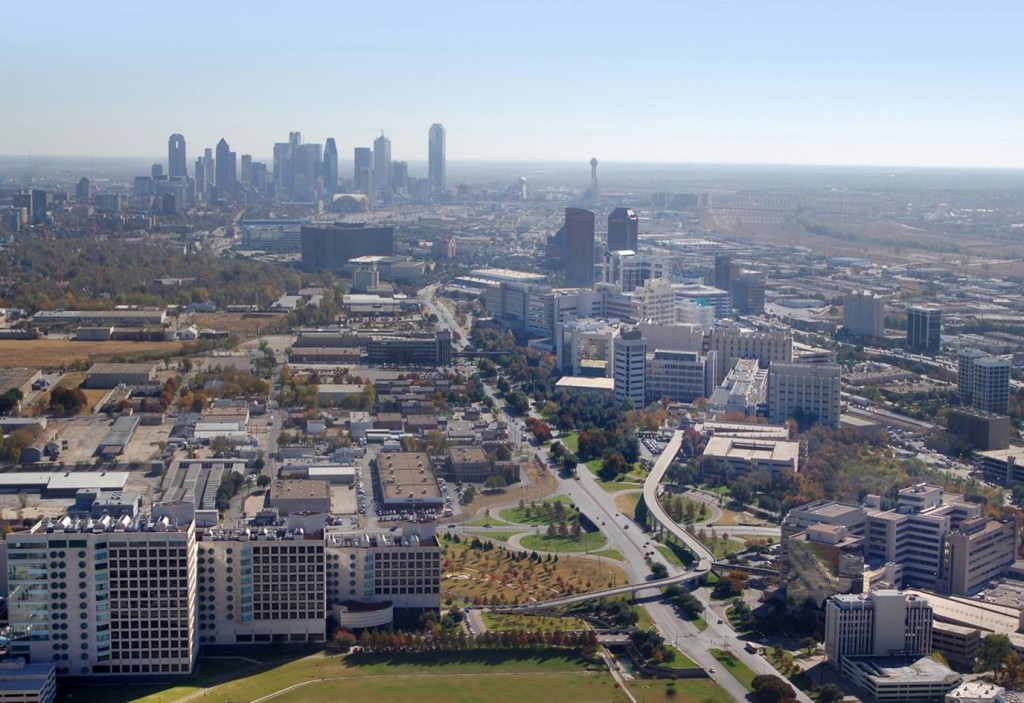
Kern Wildenthal was the President of UT Southwestern Medical Center from 1986-2008.
Below are some of the achievements of the Medical School under his leadership.
As medical and scientific opportunities have expanded and needs have grown in the
21st century, UT Southwestern Medical Center has continued its rise to the pinnacle of
medical institutions worldwide.
In 2000, UT Southwestern acquired the land and facilities of St. Paul Medical Center,
and Zale Lipshy University Hospital assumed responsibility for its management. In 2005,
the two hospitals were donated to UT Southwestern, which now operates them as the UT
Southwestern University Hospitals.
In 2002, the medical center launched a $500 million capital campaign, Innovations in
Medicine. By the conclusion of the campaign in 2007, $772 million had been raised,
including commitments of $50 million from an anonymous donor, $50 million from the
T. Boone Pickens Foundation and $125 million from Annette and Harold Simmons.
In 2004, Dr. Linda Buck was awarded the Nobel Prize, becoming the first graduate of the
UT Southwestern Graduate School of Biomedical Sciences to receive that honor.
In 2005, UT Southwestern occupied its newest biomedical research tower, the largest in
the nation. Legislators approved the largest increase in the institution’s state support in
over two decades.
In 2007, Dr. Kern Wildenthal announced that he would retire the following year as
president of UT Southwestern following 22 years of service in that position. During
his tenure, the size of the institution quintupled; the annual budget increased from $180
million to $1.5 billion; the endowment increased from
$40 million to $1.4 billion; the physical size of the medical center grew from 2.5 million
square feet to more than 9 million square feet of space on land that increased from
65 acres to 380 acres; and the faculty tripled in number, including four active Nobel
laureates,17 members of the National Academy of Sciences, 21 members of the Institute
of Medicine, 13 Howard Hughes Medical Institute Investigators and 50 presidents of
national clinical and research organizations.
In 2008, Dr. Daniel K. Podolsky was recruited from Harvard Medical School and the
Massachusetts General Hospital to succeed Dr. Wildenthal. Dr. Wildenthal moved to
Southwestern Medical Foundation at the same time that William T. Solomon succeeded
Paul M. Bass as chairman of the Board of Trustees of the Foundation.
In 2009, former Texas Gov. William P. Clements Jr., who earlier had made gifts of more
than $10 million, donated an additional $100 million.
In 2010, UT Southwestern’s Harold C. Simmons Comprehensive Cancer Center secured
National Cancer Institute (NCI) designation – an elite distinction held by only the top-tier
cancer centers in the U.S.
In 2011, construction began on UT Southwestern’s new William P. Clements Jr.
University Hospital. The 460-bed facility will replace the 50-year-old St. Paul University
Hospital The $800 million project will be funded by clinical revenues and by the Building
the Future of Medicine campaign, which seeks $200 million in philanthropic support
from friends of UT Southwestern.
In December 2011, Dr. Bruce Beutler became UT Southwestern’s fifth Nobel laureate.
The director of the new Center for the Genetics of Host Defense won the Nobel Prize
in physiology or medicine for work he performed at UT Southwestern in the 1990s that
uncovered the molecular basis for “innate immunity.”
In March 2012, the Children’s Medical Center Research Institute at UT Southwestern
was established to focus on the discovery of transformative advances related to the
understanding and treatment of cancer, birth defects and metabolic diseases. The $150
million joint venture between Children’s Medical Center Dallas and UT Southwestern
will eventually include 150 scientists in 15 laboratories led by UT Southwestern faculty
members and overseen by the Institute’s director Dr. Sean Morrison, an internationally
acclaimed stem cell researcher.
UT Southwestern now ranks among the top academic medical centers in the world. As
a premier educational, clinical and research institution, UT Southwestern is home to
more than 2,500 distinguished scientists, physicians and health professionals; 4,600
outstanding trainees; and 9,000 talented and dedicated staff employees. With more active
Nobel Prize winners than any other medical school in the world and over half of the
medical members of the National Academy of Sciences and Institute of Medicine in the
Southwest region of the U.S., UT Southwestern will lead the way in a new era of medical
care and discovery in the 21st century.
From its humble beginnings in makeshift quarters to a top-tier medical center of unique
distinction, the first seven decades of UT Southwestern’s remarkable story is only
beginning.
“The goal of UT Southwestern is to identify, recruit and retain the top educators,
physicians and researchers in the world; provide them with an environment that will
enable them to flourish; and encourage them to think boldly and build programs that
will be the best of their kind anywhere. That philosophy, coupled with the support of
community philanthropists and Texas political leaders, has created an institution that is
the envy of our peers around the world.”
Kern Wildenthal, M.D., Ph.D.

